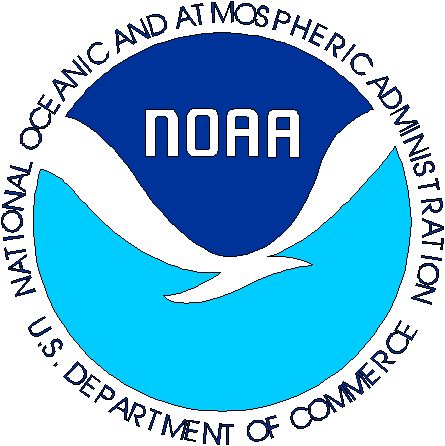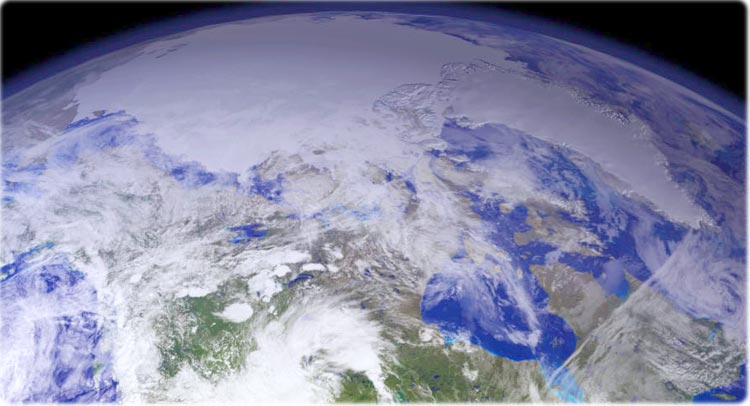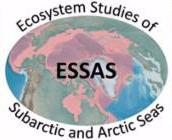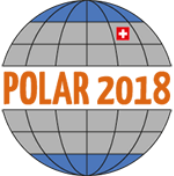|
|
|
|
|
|
|
|
No Arctic-science events are scheduled today. |
What Indigenous Communities Are Teaching Scientists About Nature. I n the rugged Sahtú region of Canada's Northwest Territories, a district so remote that in winter only a single treacherous ice road connects it to the outside world, life revolves around caribou. For millennia, the Dene people lived as nomads, tracking vast herds across the Sahtú and harvesting the itinerant animals for their meat, skin, and bones. Although the region's indigenous people today reside in villages, subsistence hunting remains central to diet and culture. The Dene language contains phrases for such concepts as "we grew up with caribou blood" and "we are people with caribou." Vox
Study Looks at Climate Change's Effects on Kodiak Berries, Wildlife. A scientist predicts climate change could have far-reaching effects on the growth of certain berries on Kodiak Island. Bill Pyle, supervisory wildlife biologist with Kodiak National Wildlife Refuge, just wrapped up a two-year pilot study on the island. The study helps cement the monitoring methods they'll use to study berry growth in the future. Alaska Public Radio
 NOAA Adding Polar Projections to Arctic ERMA Mapping Tool. NOAA Adding Polar Projections to Arctic ERMA Mapping Tool. The Arctic is one of the most remote regions on the planet but that may change as the sea ice continues to shrink, allowing for more ships, tourism, fishing, and possible oil exploration in the region. More activity also brings the possibility of oil spills and other environmental disasters. NOAA's Arctic online environmental mapping tool, called Arctic ERMA, now has polar projection base maps. Office of Response and Restoration
Melting Arctic Awaits Nitrous Oxide Release. A huge nitrous oxide release from thawing permafrost could speed up the global warming already raising temperatures across the Arctic. Scientists have identified a new climate menace in the rapidly warming Arctic. As soils frozen for tens of thousands of years begin to thaw, they could surrender vast quantities of nitrous oxide to accelerate further global warming. Nitrous oxide or N2O, known also as laughing gas, is one of the minor greenhouse gases, but molecule for molecule it is almost 300 times more potent than carbon dioxide. And permafrost with the potential to release nitrous oxide covers about a fourth of the Arctic. Eco Business
 How the Arctic Ocean Became Saline. How the Arctic Ocean Became Saline. The Arctic Ocean was once a gigantic freshwater lake. Only after the land bridge between Greenland and Scotland had submerged far enough did vast quantities of salt water pour in from the Atlantic. With the help of a climate model, researchers from the Alfred Wegener Institute have demonstrated how this process took place, allowing us for the first time to understand more accurately how Atlantic circulation, as we know it today came about. The results of the study have now been published in the journal Nature Communications. Every year, ca. 3,300 cubic kilometers of fresh water flows into the Arctic Ocean. Phys.org
Silencing the Seas: Climate Change is Irrevocably Altering the Sound of Our Oceans. In the dead of winter, bowhead whales sing beneath Arctic sea ice. It is a sound few of us will ever experience in its true, haunting beauty and, in the future, it's a sound that might be lost forever. Beyond the variable weather and melting ice caps, climate change is claiming its next victim as it silences the seas. Research has found that the sounds of the ocean are changing with the climate and waters that were once rich with life are being altered beyond recognition. Oceanographer Kate Stafford explored the effect of human activity on human noise in her recent TED Talk. WIRED
Siberian Scientists Uncover High Levels of Toxic Heavy Metals on Arctic Island. Researchers from Tyumen State University have conducted the first-ever monitoring of heavy metal content on the Bely Island in the Kara Sea and found elevated levels of lead in the soil, Dmitry Moskovchenko, Doctor of Geographical Sciences, and the leading research assistant at International Institute of Cryology and Cryosophy at TyumSU explained. The scientists examined the soil on the island and discovered that the total content of metal is normal but in three spots, the level of lead pollution exceeded permissible boundaries. The scientists presume that the metal particles could have been carried by wind from remote industrial areas. "In this regard, Bely Island is a "blind-spot" in our region. Previously, no ecological and geochemical research had been conducted there," Moskovchenko noted. TASS
Domes of Frozen Methane May Be Warning Signs for New Blow-Outs. "Every year we go back to the dome area with our research vessel, and every year I am anxious to see if one of these domes has become a crater," says lead author of the study Pavel Serov, PhD candidate at CAGE at UiT The Arctic University of Norway. These domes are the present-day analogue to what scientists think preceded the craters found in the near-by area, which were recently reported in Science. The craters were formed as the ice sheet retreated from the Barents Sea during the deglaciation some 12,000 years ago. At the time, 2km thick ice-cover loaded what now is the ocean floor with heavy weight. Under the ice sheet the methane became stored as hydrate, a solid form of frozen methane. Science Daily
|
|
Future Events
 Ninth International Congress of Arctic Social Sciences: People and Places (ICASS IX), June 8-12, 2017 (Umea, Sweden). ICASS IX's theme is People & Place. Research on social sciences and humanities have a great responsibility to address the challenges for sustainable development in the Arctic, with a specific focus on the many different parts of the Arctic and the people that live there. The multiple Arctics have lately been addressed by many policy makers and researchers. The purpose is often to counteract the stereotypic understanding of the Arctic too often represented by icebergs and polar bears. A focus on people and place highlights the many variances across the region in terms of climate, political systems, demography, infrastructure, history, languages, legal systems, land and water resources etc. Ninth International Congress of Arctic Social Sciences: People and Places (ICASS IX), June 8-12, 2017 (Umea, Sweden). ICASS IX's theme is People & Place. Research on social sciences and humanities have a great responsibility to address the challenges for sustainable development in the Arctic, with a specific focus on the many different parts of the Arctic and the people that live there. The multiple Arctics have lately been addressed by many policy makers and researchers. The purpose is often to counteract the stereotypic understanding of the Arctic too often represented by icebergs and polar bears. A focus on people and place highlights the many variances across the region in terms of climate, political systems, demography, infrastructure, history, languages, legal systems, land and water resources etc.
 2017 ESSAS Open Science Meeting on Subarctic and Arctic Science, June 11-15, 2017 (Tromsø, Norway). 2017 ESSAS Open Science Meeting on Subarctic and Arctic Science, June 11-15, 2017 (Tromsø, Norway). This 3rd Open Science Meeting (OSM) is intended to attract an interdisciplinary group of scholars who will be prepared to discuss their research in the Subarctic, in both the North Atlantic and the North Pacific, and the Arctic Ocean. The title of the OSM is Moving in, out and across the Subarctic and Arctic marine ecosystems: shifting boundaries of water, ice, flora, fauna, people and institutions. It will document the changes that have occurred, the processes that led to these changes, and how future changes are likely to further affect these marine ecosystems. It will also to consider the people who depend upon these ecosystems and how they may be able to cope with the changes in the ecosystem goods and services that they derive from these ecosystems. These include the availability of subsistence foods and the opportunity for commercial fishing. Economic and societal pressures on coastal communities and nations will be sought in relation with the ecosystem changes. To put the present day in a longer perspective, the conference will include a session on the paleoecology of people in Subarctic and Arctic regions that were forced to adjust to the changing temperature and sea-ice conditions in the past.
The Wilson Center-Arctic Circle Forum: The United States and Russia in the Arctic, June 21-22, 2017 (Washington, DC USA). In light of recent world media attention towards Russia and the United States, the Arctic Circle and the Wilson Center will host a Forum on the two countries' complicated yet inherently linked role and relationship in the Arctic. The future of the Arctic will be greatly influenced by the actions of the United States and Russia. What are their policies, their plans and their relations with other states in the Arctic and the Asian and European countries seeking an increasing role in the Arctic? High-level representatives, policymakers and experts will gather in the Ronald Reagan Building in Washington, DC, June 21, to address these questions and challenges. This event is co-hosted by Wilson Center and Arctic.
The 2nd Asian Conference on Permafrost, July 2-6, 2017 (Sapporo, Japan). Delegates will participate in state-of-the-art oral and poster presentations in the modern city of Sapporo (host of the 1972 Winter Olympics). Field trips will visit marginal and extrazonal mountain permafrost sites that support unique geo-eco-hydrological features. All aspects of frozen ground research will be covered, from needle ice to deep permafrost, from frozen ground engineering in cities to permafrost on volcanoes, and from links between frozen ground and ancient cultures to present-day outreach. Plan now to enjoy science and engineering, excellent food, and unique field trips in Sapporo.
This biennial symposium, co-hosted by U.S. National/Naval Ice Center (NIC) and the US Arctic Research Commission (USARC) focuses on a broad cross-section of naval and maritime operations and issues in an "ice-free Arctic." The symposium brings together nationally and internationally recognized experts on Arctic marine operations, infrastructure, science, environmental observations, and on a wide range of other topics. Registration is FREE. For the first time, the event will be webcast live, enabling broader participation.
As the Symposium is organized jointly by two leading Research Institutes of Russian Academy of Science - Institute of Water Problems and Melnikov Permafrost Institute, particularly the contributions on following research topics are welcome:
- Observational evidences of change in coupled permafrost-hydrology system.
- Present state and future projections of local, regional and pan-Arctic hydrology.
- Modeling studies representing landscape evolution, dynamics of water storages and permafrost degradation.
- Impacts of permafrost hydrology changes on local communities.
VII International Conference on Cryopedology, August 21-25, 2017 (Yaktsk, Russia). The conference will be hosted by the Institute for Biological Problems of the Cryolithozone of the Siberian Branch of the Russian Academy of Sciences (SB RAS). Plenary reports will be organized in the hall of the Academy of Sciences of the Sakha (Yakutia) Republic. The official languages of the conference are English and Russian (with translation). All technical facilities (projectors, computers, video sets) will be available during the conference for presentation of papers. Additional information will be available soon. See the Facebook page here.
 2017 University of the Arctic Rectors' Forum and Conference, August 27-29, 2017 (Aberdeen, Scotland). This conference will also consider how northern scholarship can add to discussions on the North into broader terrains of intellectual engagement. In so doing, it will challenge dominant paradigms of research in both the natural and the social sciences, above all by calling into question the very separation of the world of nature from that of human society which underwrites the distinction between these two branches of scientific inquiry. In its place the conference will seek to forge a new practice of interdisciplinary research, done in collaboration with northern residents and on their terms, which recognizes that every discipline is itself an ongoing conversation, or a way of knowing, rather than a compartment within an overarching, hierarchically organized system of knowledge. Conversations from the North will, then, help to generate a science that is more open-ended, responsive to environmental variation and respectful of the wisdom of inhabitants. 2017 University of the Arctic Rectors' Forum and Conference, August 27-29, 2017 (Aberdeen, Scotland). This conference will also consider how northern scholarship can add to discussions on the North into broader terrains of intellectual engagement. In so doing, it will challenge dominant paradigms of research in both the natural and the social sciences, above all by calling into question the very separation of the world of nature from that of human society which underwrites the distinction between these two branches of scientific inquiry. In its place the conference will seek to forge a new practice of interdisciplinary research, done in collaboration with northern residents and on their terms, which recognizes that every discipline is itself an ongoing conversation, or a way of knowing, rather than a compartment within an overarching, hierarchically organized system of knowledge. Conversations from the North will, then, help to generate a science that is more open-ended, responsive to environmental variation and respectful of the wisdom of inhabitants.
- Small and off-grid community energy solutions
- Oil and gas development
- Renewable energy
- Regulation and Financing
- Transportation and transmission
The AES is a multi-disciplinary event expected to draw several hundred industry officials, scientists, academics, policy makers, energy professionals and community leaders together to collaborate and share leading approaches on Arctic energy issues.
2017 Arctic Circle Assembly, October 13-15, 2017 (Reykjavik, Iceland). The annual Arctic Circle Assembly is the largest annual international gathering on the Arctic, attended by more than 2000 participants from 50 countries. The Assembly is held every October at the Harpa Conference Center and Concert Hall and is attended by heads of states and governments, ministers, members of parliaments, officials, experts, scientists, entrepreneurs, business leaders, indigenous representatives, environmentalists, students, activists and others from the growing international community of partners and participants interested in the future of the Arctic.
 Polar Law Symposium 2017 and Rovaniemi Arctic Spirit, November 13-16, 2017 (Rovaniemi, Finland). The purpose of the Polar Law Symposium is to examine, in detail, the implications of the challenges faced by the Polar Regions for international law and policy and to make recommendations on appropriate actions by states, policy makers and other international actors to respond to these emerging and re-emerging challenges. The Rovaniemi Arctic Spirit Conference is integrated with the Polar Law Symposium, which will be organized by the Northern Institute for Environmental and Minority Law at the Arctic Center of the University of Lapland. Polar Law Symposium 2017 and Rovaniemi Arctic Spirit, November 13-16, 2017 (Rovaniemi, Finland). The purpose of the Polar Law Symposium is to examine, in detail, the implications of the challenges faced by the Polar Regions for international law and policy and to make recommendations on appropriate actions by states, policy makers and other international actors to respond to these emerging and re-emerging challenges. The Rovaniemi Arctic Spirit Conference is integrated with the Polar Law Symposium, which will be organized by the Northern Institute for Environmental and Minority Law at the Arctic Center of the University of Lapland.
ISAR-5 Fifth International Symposium on Arctic Research, January 15-18, 2017 (Tokyo, Japan). The fifth ISAR has been planned at the recommendation of the science steering committee of ISAR-4, which was held in Toyama, Japan in April 2015. The fifth ISAR will be devoted to discussions on environmental changes in the Arctic and their regional and global implications, to seek additional international scientific collaboration in this area by gathering, synthesizing and sharing information related to these changes occurring in the Arctic. Special emphasis will be placed on the fields of the social sciences and humanities, which were not included in the previous ISARs. ISAR-5 will consist of general sessions and special sessions. The general sessions will address the following topics: atmosphere; ocean and sea ice; rivers, lakes, permafrost, and snow cover; ice sheets, glaciers, and ice cores; terrestrial ecosystems; marine ecosystems; geospace; policies and economy; and social and cultural dimensions. Special sessions will be solicited on cross-cutting themes.
 POLAR 2018, June 15-27, 2018 (Davos, Switzerland). POLAR2018 is a joint event from the Scientific Committee on Antarctic Research (SCAR) and the International Arctic Science Committee (IASC). The SCAR meetings, the ASSW and the Open Science Conference will be hosted by the Swiss Federal Institute for Forest, Snow and Landscape Research WSL under the patronage of the Swiss Committee on Polar and High Altitude Research. The WSL Institute for Snow and Avalanche Research SLF is organizing POLAR2018. POLAR 2018, June 15-27, 2018 (Davos, Switzerland). POLAR2018 is a joint event from the Scientific Committee on Antarctic Research (SCAR) and the International Arctic Science Committee (IASC). The SCAR meetings, the ASSW and the Open Science Conference will be hosted by the Swiss Federal Institute for Forest, Snow and Landscape Research WSL under the patronage of the Swiss Committee on Polar and High Altitude Research. The WSL Institute for Snow and Avalanche Research SLF is organizing POLAR2018.
|
|

  
4350 N. Fairfax Drive, Suite 510
Arlington, VA 22203, USA
External links in this publication, and on the USARC's World Wide Web site ( www.arctic.gov) do not constitute endorsement by the US Arctic Research Commission of external Web sites or the information, products or services contained therein. For other than authorized activities, the USARC does not exercise any editorial control over the information you may find at these locations. These links are provided consistent with the stated purpose of this newsletter and the USARC Web site.
|
|
|
|
|
|
|
|
|